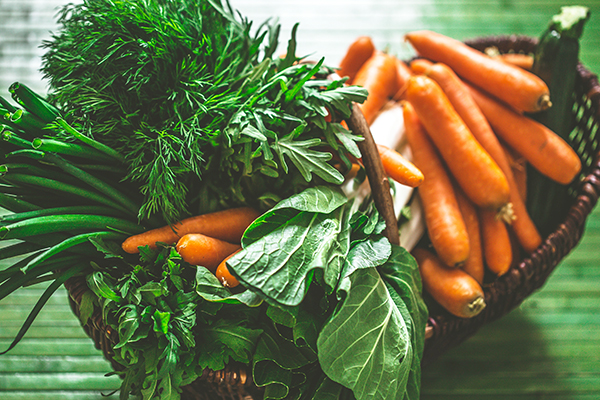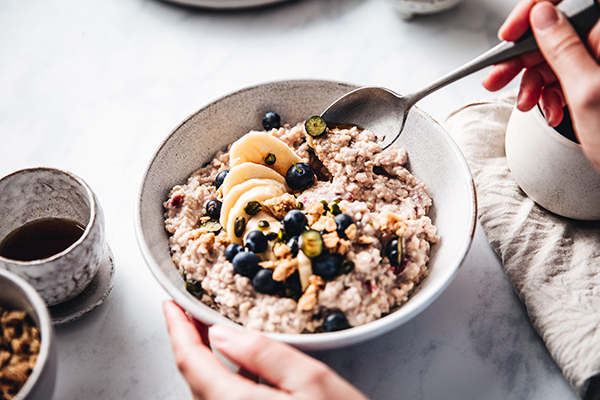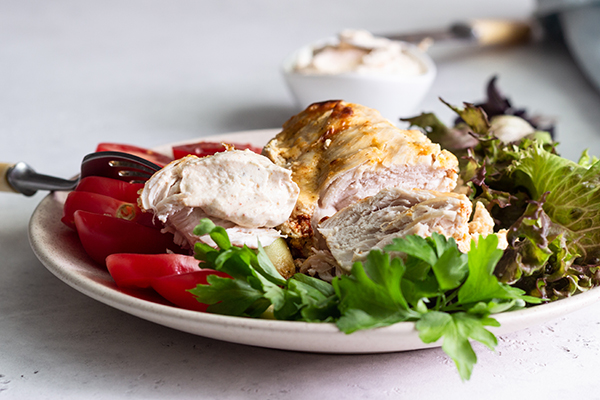“Nutrient-dense foods are foods that are rich in nutrients in relation to the number of calories they contain,” says Rima Kleiner, M.S., R.D., and blogger at Dish on Fish. To learn more about what is considered a nutrient-dense food, scroll down to read this post by Jenessa Connor, CPT from the Beachbody On Demand Blog.

Most healthy living advice boils down to a few basic tenets: Exercise, stay hydrated, and eat nutrient-dense foods.
Physical activity recommendations are readily available, and eight glasses of water a day is the universally accepted standard.
But amid competing philosophies on nutrition and endless menu options, how do we know which foods are nutrient-dense foods?
What Are Nutrient-Dense Foods?
“Nutrient-dense foods are foods that are rich in nutrients in relation to the number of calories they contain,” says Rima Kleiner, M.S., R.D., and blogger at Dish on Fish.
“In other words, nutrient-dense foods provide a lot of nutrient bang — vitamins, minerals, antioxidants, dietary fiber — for a low-calorie buck,” she explains.
For example, both an apple and a handful of jelly beans clock in at about 100 calories.
Calorically speaking, they’re quite similar.
But while the jelly beans offer carbohydrates in the form of sugar (and not much else), the apple, a nutrient-dense food, contains carbohydrates, fiber, potassium, vitamin C, and vitamin B6.
Our bodies need nutrients like these to function properly and maintain our immune systems.
“Really, most whole foods that have been minimally processed are typically nutrient-dense foods,” Kleiner says. “While it’s easy to get hung up on specific foods or nutrients, we should aim to get a variety of nutrients from a variety of whole foods.”
To ensure your diet is healthy and balanced, fill your plate with an assortment of these nutrient-dense foods.
1. Fruits and Vegetables
Unsurprisingly, fruits and vegetables top the list of nutrient-dense foods you need to maintain a healthy diet.
In addition to essential vitamins and minerals, fruits and vegetables are packed with antioxidants.
Antioxidants help counteract unstable molecules called free radicals. These can cause damage to the body’s cells through a process called oxidative stress.
A fruit or vegetable’s color is actually a sign of its antioxidant properties, says Quyen Vu, M.S., Culinary Nutrition Specialist at Beachbody.
“Red is an indicator of lycopene, which is found in tomatoes,” she says. “Yellow or orange means beta carotene, found in carrots. And blue or purple signifies anthocyanins, which are found in blueberries.
This is why it’s important to “eat the rainbow.”
2. Whole Grains
Oats, brown rice, whole wheat, and barley are all nutrient-dense foods that fall under the category of whole grains.
According to Kleiner, you should aim to fill a quarter of your plate with these nutrient-dense foods, which are rich in B vitamins, antioxidants, and fiber (including prebiotics).
Looking to drop a few pounds or just maintain a healthy weight? Don’t skip whole grains.
The fiber content of this nutrient-dense food group can help you feel fuller for longer periods of time, which could make it easier to resist cravings and extra snacks.
3. Lean Meats and Seafood
Lean meat is a nutrient-dense food that offers protein without excess fat.
“Skinless poultry is a lean protein and a complete protein, so it contains all the essential amino acids that we need in the diet,” says Amanda A. Kostro Miller, R.D., L.D.N.
Essential amino acids, which are crucial to muscle growth and repair, cannot be produced by the body and, therefore, must be provided through food.
Fish and shellfish, also nutrient-dense foods that provide plenty of protein, contain “B vitamins, selenium, calcium, vitamin D, and antioxidants,” says Kleiner.
Based on the Dietary Guidelines for Americans, she recommends eating 2-3 servings of seafood every week.
4. Low-Fat Dairy
Milk, yogurt, and cheese are considered nutrient-dense foods, but Miller recommends their low-fat varieties.
“Low-fat and non-fat milk contain protein without all the fat of 2% and whole milk,” she says.
Milk also contains calcium and phosphorus, Miller adds, which are essential to bone health.
5. Healthy Fats
“Nuts, healthy oil, and seeds are nutrient-dense foods, but they pack in substantial calories per serving,” says Miller.
That’s because fat (even the healthy varieties) contains more calories per gram than protein and carbohydrates.
However, your body needs the fat in nutrient-dense foods for energy, brain health, and many critical functions, like vitamin absorption.
The key is to enjoy these high-fat, nutrient-dense foods but remain mindful of portion control.






